A PlayStation 4 exclusive released in March 2015, Bloodborne was published by Sony Computer Entertainment and developed by FromSoftware, with Hidetaka Miyazaki at the helm as director. Although it didn’t have Souls in the title, Bloodborne was more or less the latest entry in FromSoftware’s Souls series, having been preceded by Demon’s Souls and the first two Dark Souls games, as Bloodborne is also a third-person action-RPG, and one with a large number of similar – and sometimes identical – gameplay mechanics and features.
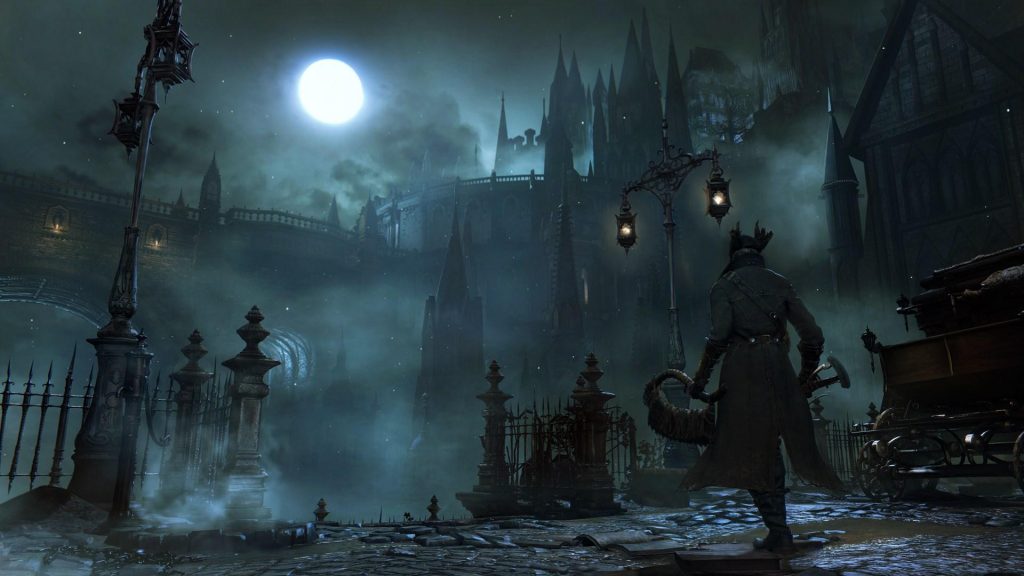
Bloodborne moves away from the medieval fantasy aesthetic of the Souls games, its world instead being more Gothic and Victorian, the game taking place primarily in the cursed city of Yarnham, a place known for its blood-related medical treatments. After creating your character, you arrive in Yarnham as an outsider on the night of “the Hunt,” with beasts and other monstrosities roaming the streets, the majority of the townspeople having gone mad.
And so you become a hunter, your task being to put a stop to the beast scourge while also seeking the “Paleblood” which your character seems to have come to Yarnham to find. Saying that the story is “a little more complicated than that” would be a massive understatement, but more on that later.
Although I’ve been a huge fan of the Souls games since Demon’s Souls, I admit to initially being a little sceptical about Bloodborne due to its combat being faster and more action-orientated, along with the game’s inclusion of firearms. But I needn’t have worried, as although Bloodborne’s combat is generally faster and more frantic than that of the Souls games, encouraging an aggressive playing style, it never devolves into brainless button-mashing.
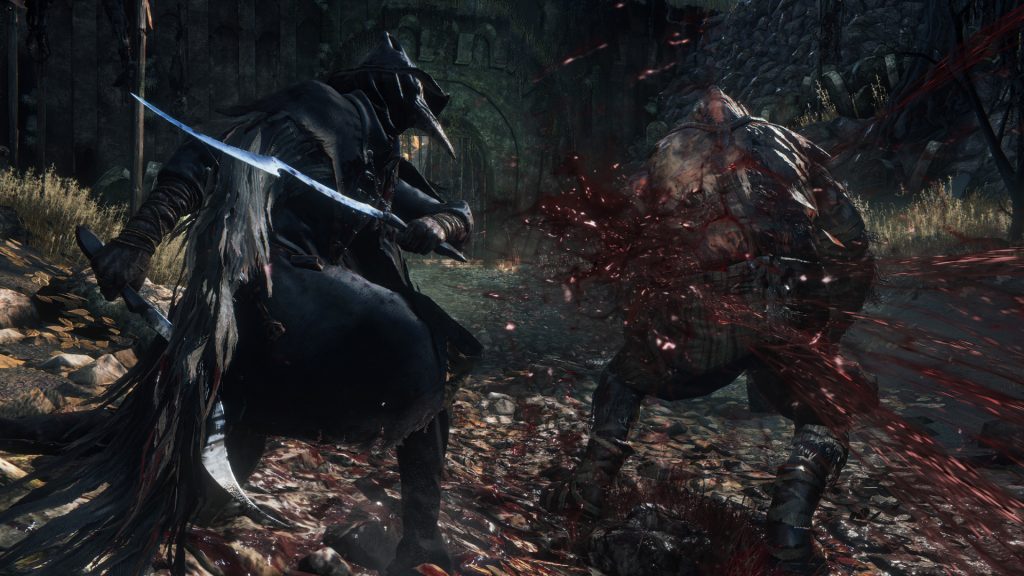
While the combat and character build possibilities may not be quite as varied as that of the Souls games, Bloodborne still offers numerous melee weapons and guns to choose from as well as a range of offensive and defensive items. Weapons can also be upgraded, and stat-boosting runes can be equipped on your character, so on the whole you still have plenty of room to experiment.
“But Alex,” I hear you cry, “some shrieking, obnoxious, imagination-bereft man-child on YouTube said that the Souls games are, like, the hardest videogames ever! Is this true?”
No. No, it’s not. The focus some people place on the difficulty of these games is misguided, as although they’re certainly more challenging than many high-profile videogames today, the fact is that on the whole they’re tough but fair, ignoring the condescending hand-holding and fear of testing the player present in many modern games, and instead trusting the player to learn, persevere and eventually triumph.
Right from the start, Bloodborne just drips atmosphere thanks to its fantastic visual and sound design, some highlights of the latter including the curses and threats of deranged townspeople, the subtle but sinister ambient sounds, the horrific screeching and roaring of some bosses, and a brilliant soundtrack on top of all that.
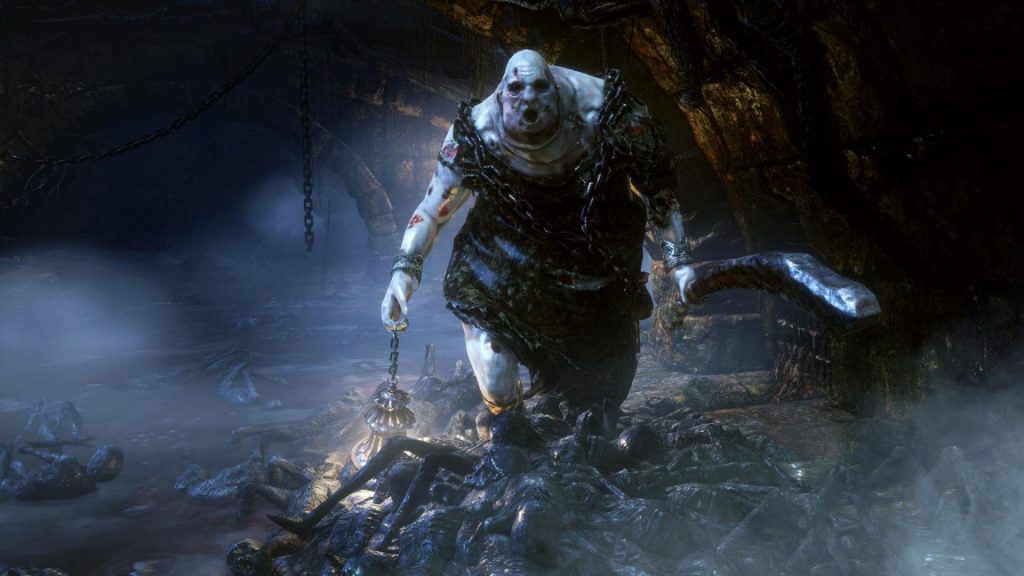
As for the visuals, enemy and boss designs are often marvellously grotesque, while the architecture and general design of central Yarnham is incredibly gothic without descending into parody. Other locations include the melancholic and soothing Hunter’s Dream, the ruined Old Yarnham, the labyrinthine Forbidden Woods, the utterly sinister Upper Cathedral Ward, and the snow-covered Forsaken Castle Cainhurst. Also, FromSoftware deserve credit for making these latter two areas just as impressive as the other areas in the game even though they’re totally optional.
Looking beneath the visuals reveals excellent level design to back them up, something at which FromSoftware have frequently excelled in the Souls games, with most areas containing multiple paths and shortcuts, numerous nooks and crannies, and a great feeling of interconnectedness.
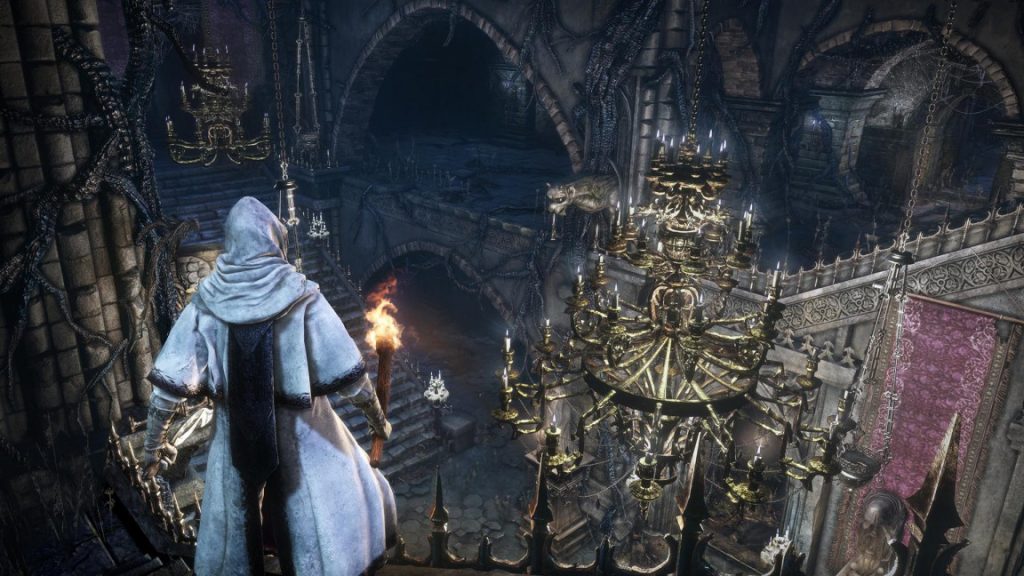
Standing in contrast to this are the Chalice Dungeons, a series of optional areas, many randomly generated. Although it’s worth exploring at least a few of these dungeons, and while they can be useful for farming blood echoes – the game’s main currency – and items, it doesn’t take long for them to start becoming repetitive, with environments and layouts regularly being reused. Even as someone who loves the Souls games, I only got through about seven or eight dungeons before putting them aside, even though a few of them – annoyingly – contain unique bosses and items not found in the main game.
As I mentioned, Bloodborne reuses mechanics and features from the Souls games, such as online multiplayer being woven into the game, a stamina system, being able to retrieve your bloodstain after death, leaving messages for other players, etc.
But alongside the Chalice Dungeons and other new additions, one new feature of note is the insight mechanic. Insight is used as a secondary currency, is integral to the game’s multiplayer, and the amount of insight your character possesses can actually affect the game-world in some ways, as if your insight reaches certain set amounts then this allows you to see and hear things previously hidden. Although this latter aspect of the insight mechanic doesn’t come into play often, it’s a great example of the game blending gameplay and narrative, and one I wish they’d implemented to a greater degree.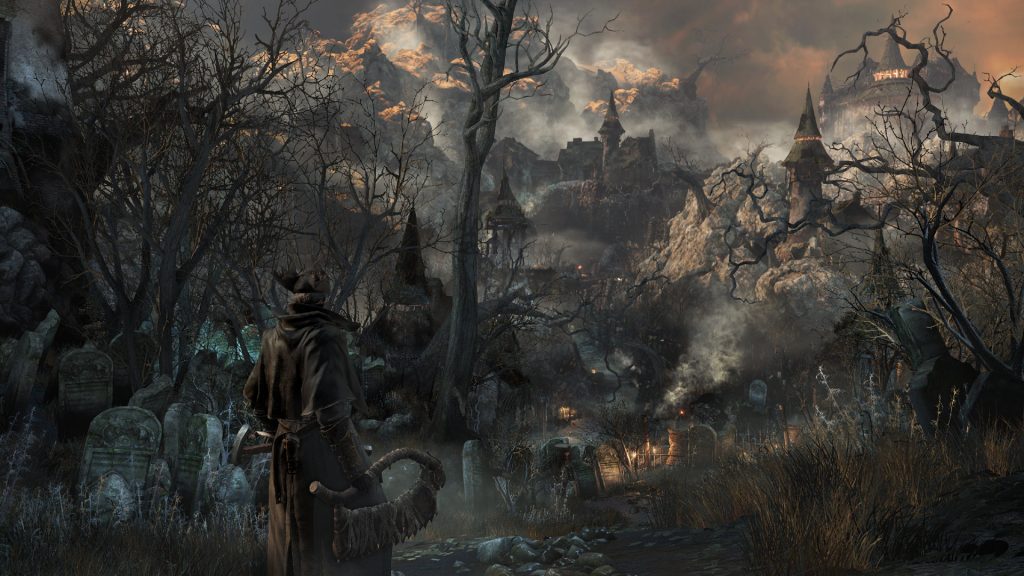
Speaking of Bloodborne’s narrative, it’s not something I’m going to discuss in great detail here as I’d like to keep the word count of this feature below ten-billion words. Because while the Souls games are known for their subtle storytelling and in-depth lore, the narrative of Bloodborne is perhaps the most ambiguous and impenetrable of them all, being incredibly detailed but also very open to interpretation, resulting in a vast torrent of speculation and discussion which continues to this day.
This is in part thanks to the narrative being heavily influenced by the work of author H. P. Lovecraft, known for his tales of cosmic horror and eldritch abominations, Lovecraft’s stories often dealing with themes such as unseen, otherworldly forces and forbidden knowledge, and the cost to the human mind of encountering such dark truths.
I love how this cosmic horror aspect of Bloodborne wasn’t revealed in the game’s pre-release build-up even though it’s fundamental to the narrative, and I vividly remember the wonderful moment during my first playthrough when I suddenly realised that there was something else going on beneath the game-world’s gothic horror surface.
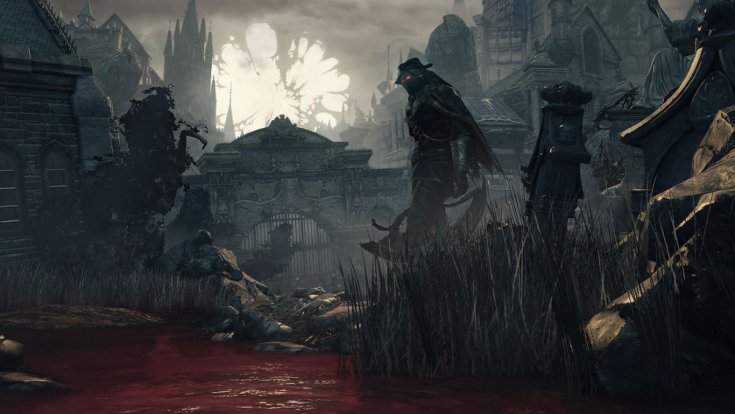
Something else for which Bloodborne deserves to be applauded is its approach to additional content, as the only available content not present in the main game is The Old Hunters, a hefty expansion containing new areas, weapons, items, clothing, characters, enemies, and bosses. It’s extremely important to the lore, revealing many secrets, but also contains some of the toughest content in the game, so be warned.
So no microtransactions, no weapon packs or skins, no multiplayer bonuses or any other shit sold separately purely in the name of greed. Despite the lies of some other videogame publishers and developers, FromSoftware continue to prove that you don’t actually need to contemptuously rip off your customers to be a success. Imagine that.
And Bloodborne certainly was a success, both critically and commercially. Although this implies that a sequel is inevitable, Bloodborne really feels like it tells a complete story, so it’s hard to know where a second game could go. Personally, although there are a number of long-running videogame series of which I’m a fan, I’m not a big believer in the necessity of sequels, so if the one Bloodborne game is all we get then that’s fine with me, as it will always stand as a brilliantly designed, memorable, deep, and uncompromising action-RPG.
Praise the blood.
Emily Medlock is an avid gamer whose passions not only include video games of all kinds, but anime, music, movies, and reading.
